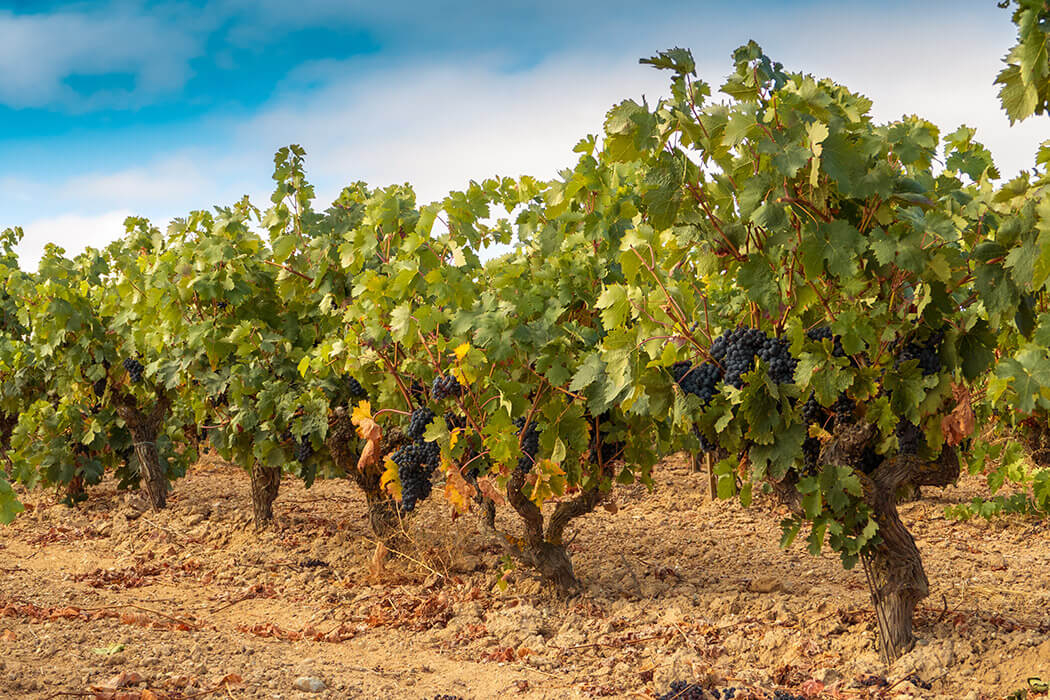
Spain is the third-largest wine-producing country in the world, with a rich history of winemaking dating back more than 2,000 years. The country boasts diverse climates and terroirs, resulting in a wide range of wine styles and grape varieties. This introduction will take you through some of the most famous and diverse wine regions in Spain, introducing you to their unique characteristics and flavours.
1. Rioja
Rioja is arguably Spain's most famous and prestigious wine region, located in the north of the country along the Ebro River. The region is known for its high-quality red wines made primarily from the Tempranillo grape, often blended with Garnacha, Graciano, and Mazuelo. Rioja wines are aged in oak barrels, giving them a distinctive, smooth, and complex character.
Key Grape Varieties: Tempranillo, Garnacha, Graciano, Mazuelo
2. Ribera del Duero
Located in the heart of the Duero River Valley, Ribera del Duero is another prestigious Spanish wine region known for its bold and full-bodied red wines. The region's high altitude and extreme temperature fluctuations result in wines with intense flavours and excellent ageing potential. The primary grape variety is Tinto Fino (a local name for Tempranillo), often blended with small amounts of Cabernet Sauvignon, Merlot, and Malbec.
Key Grape Varieties: Tinto Fino (Tempranillo), Cabernet Sauvignon, Merlot, Malbec
3. Priorat
Situated in the Catalonia region, Priorat is a small but highly regarded wine region known for its powerful and concentrated red wines. The unique terroir, characterized by its steep slopes and slate soils, imparts a distinct minerality to the wines. The primary grape varieties are Garnacha and Cariñena, often blended with international varieties such as Cabernet Sauvignon and Syrah.
Key Grape Varieties: Garnacha, Cariñena, Cabernet Sauvignon, Syrah
4. Rías Baixas
Located in the cool and rainy Galicia region in northwestern Spain, Rías Baixas is known for its crisp and aromatic white wines made from the Albariño grape. These wines are characterized by their high acidity, intense fruitiness, and subtle saline notes, making them a perfect match for seafood dishes.
Key Grape Variety: Albariño
5. Jerez (Sherry)
Jerez, located in the Andalusia region in southern Spain, is the home of Sherry, a unique and diverse category of fortified wines. Sherry can range from dry and crisp to sweet and rich, with styles including Fino, Manzanilla, Amontillado, Oloroso, and Pedro Ximénez. The primary grape varieties used in Sherry production are Palomino, Pedro Ximénez, and Moscatel.
Key Grape Varieties: Palomino, Pedro Ximénez, Moscatel
6. Navarra
Located just north of Rioja, Navarra is a versatile wine region that produces a variety of wine styles, including reds, whites, and rosés. The region is particularly famous for its rosé wines made from Garnacha, which are characterized by their vibrant fruitiness and refreshing acidity. Reds are often made from Tempranillo, Garnacha, and international varieties such as Cabernet Sauvignon and Merlot.
Key Grape Varieties: Garnacha, Tempranillo, Cabernet Sauvignon, Merlot, Chardonnay, Viura

7. Penedès
Situated in the Catalonia region, Penedès is known for its diverse wine production, including reds, whites, and sparkling wines. The region is home to Spain's famous sparkling wine, Cava, which is made using the traditional method from local grape varieties such as Macabeo, Xarel-lo, and Parellada. Penedès also produces still wines, with reds made from Garnacha, Tempranillo, and international varieties, and whites from Xarel-lo and Chardonnay.
Key Grape Varieties: Macabeo, Xarel-lo, Parellada, Garnacha, Tempranillo, Chardonnay

8. Rueda
Located in the heart of the Duero River Valley, Rueda is a white wine-focused region known for its fresh and vibrant wines made from the Verdejo grape. These wines are characterized by their zesty acidity, citrus fruit flavours, and subtle herbaceous notes. Rueda also produces small quantities of red wines, mainly from the Tempranillo grape.
Key Grape Variety: Verdejo, Viura, Sauvignon Blanc, Tempranillo
9. Toro
Toro is a Spanish wine region located in the province of Zamora, along the Duero River. The region is known for its bold and powerful red wines made from the Tinta de Toro grape, a local variant of Tempranillo. Toro's wines are characterized by their deep colour, high alcohol content, and concentrated fruit flavours, with the potential for long ageing.
Key Grape Variety: Tinta de Toro (Tempranillo)

10. Bierzo
Situated in the northwest of Spain, Bierzo is a relatively small wine region known for its red wines made from the Mencía grape. These wines are typically medium-bodied and exhibit flavours of red fruit, floral notes, and minerality, often with a hint of smokiness. Bierzo also produces white wines, primarily from the Godello grape, which are fresh and fruity with good acidity.
Key Grape Varieties: Mencía, Godello
11. La Mancha
La Mancha, located in central Spain, is the largest continuous vine-growing area in the world. This vast region is known for its high production of affordable and easy-drinking wines, made from a variety of red and white grape varieties. The hot and dry climate of La Mancha results in wines with ripe fruit flavours and moderate acidity.
Red wines from La Mancha are primarily made from Tempranillo (locally known as Cencibel), Garnacha, and international varieties such as Cabernet Sauvignon, Merlot, and Syrah. The region's white wines are produced from Airen, Macabeo, Sauvignon Blanc, and Chardonnay.
Key Grape Varieties: Tempranillo (Cencibel), Garnacha, Cabernet Sauvignon, Merlot, Syrah, Airen, Macabeo, Sauvignon Blanc, Chardonnay
Spain's diverse wine regions offer a wealth of unique flavours and styles to explore. From the iconic reds of Rioja and Ribera del Duero to the crisp whites of Rías Baixas and the complex world of Sherry, there is truly something for every palate. As you delve into the world of Spanish wines, remember that this introduction is just the beginning, ¡Salud!